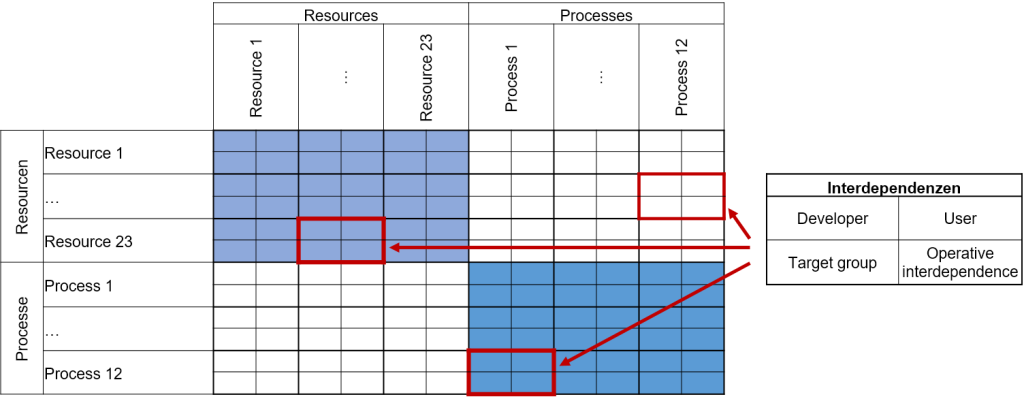
| Source | Lindemann et al. “The application of the Multiple-Domain Matrix: Considering multiple domains and dependency types in complex product design.” Systems, Man and Cybernetics, 2008. SMC 2008. IEEE International Conference on. IEEE, 2008. |
|---|---|
| Application | MDM is applied in product development. It could also been used for services. |
| Idea | MDM is an extension for DSM. Several domains could be integrated easily. MDM consists of an individual number of DSM und DMM. E.g. if two domains should be represented (processes and resources) four arrays are needed.
If required individual relationships could be divided further, e.g. into several target groups. |
| Phases in the modularization process | Structuration |
| Module structure | Complex structure |
| Input | Services, which are disassembled into singular components |
| Output | An array of dependencies that contains more dimensional interdependencies and strengthens |
| Application requirements | Similar to the DSM the method need already decomposed services. The most important advantage is the more dimensional illustration that enables simultaneously optimizations on more dimensions. Further cluster-algorithms for module generation are needed. In an article from Dörbecker et al. (2013) the stage of module generation isn´t descripted further, so that no details about the complexity of that stage can´t be done. |
| Approach |
|
| Conclusion | Advantage: MDM enables a more dimensional view on the interdependencies. This leads to a higher information content as like as DSM
Disadvantage: An adequate algorithm is needed for the evaluation of the arrays and the module generation (clustering procedure). It´s complexity increases with the increasing number disproportional (e.g. there are 9 arrays if three dimensions are given) |

